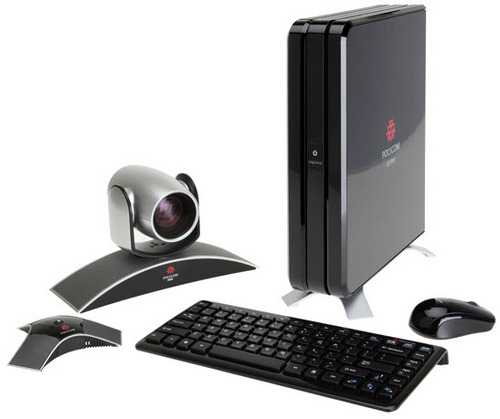Cisco injects new life into Catalyst 6500 switch
By Jim Duffy, Network World
Cisco Tuesday took dead aim at HP and its own shrinking profit margins by introducing a major refresh to its venerable Catalyst 6500 Ethernet switching platform.
The company announced at Cisco Live in Las Vegas the Supervisor 2T engine for the 10-year-old Catalyst 6500, which delivers 2 Terabits of bandwidth to the system. This is almost three times the scale of the previous Supervisor 720, and like with that offering, 2T bandwidth can be doubled when configured into what Cisco calls a Virtual Switching System.
Cisco also announced a new generation of 10G line cards for the Sup 2T and didn't mince words when describing the system's purpose: to marginalize competitive offerings from Brocade, Juniper and most significantly HP, which has been gaining share on Cisco of late with lower cost platforms.
NINE LIVES: Catalyst 6500 has another decade or more left, Cisco hints
"We reject ‘good enough' networks" which are marketed mostly on low price and drive commoditization, says John MCool, senior vice president and general management of Cisco's Core Technology Group. "Our market share has hovered around 70%, or 50% of intelligent ports. We've been able to maintain share, and grow our core share, by delivering value to our customers."
At $38,000, the Sup 2T is priced at one-third that of HP's A9508 switch yet is 3X the performance and supports 200+ features or services, claims Scott Gainey, Cisco director of marketing for Unified Access Solutions. Cisco says it also almost doubles the amount HP spends on R&D -- $5.3 billion vs. $3 billion – even though Cisco is half HP's size in terms of revenue.
HP, citing data from Dell'Oro Group, says it captured 12% of total worldwide Ethernet switching revenue market share in Q1, up 2.5 percentage points year-over- year. Cisco's share fell 5.8 points in the same period, HP claims.
But Cisco is also facing a troublesome switching product transition in which the high margin Catalyst 6500 is being squeezed by the lower margin, higher performing Nexus 7000 line. This is lowering switching profits for Cisco, which doesn't sit well with the company or Wall Street.
So the introduction of the Sup 2T may be a way for Cisco to maintain Catalyst margins in the face of the Nexus transition; or it may indicate that a large swath of the Catalyst 6500 base, especially in the enterprise campus, is resisting the migration to the Nexus.
McCool, however, says it's simply a case where the market is "bifurcating" into separate requirements for the enterprise campus vs. the data center.
"The market is bifurcating into a campus-based market needing deep services and the data center converging LAN and SAN," McCool says. "It takes different technology. We'd be silly to walk away from that installed base and loyal set of customers."
Cisco says it has 25,000 customers for the Catalyst 6500 and 700,000 chassis installed worldwide, representing 70 million gigabit ports, 2.1 million 10G ports and 1.2 million supervisor engines.
It has quite literally been a cash cow for Cisco since its introduction in 1999.
Eighty percent of those 700,000 chassis are of the "E series" variety, which is designed to scale the switch line beyond 4,000 watts of power. Cisco expects most of these to migrate to the 2T, whether they are in the enterprise campus or data center, says Kumar Srikantan, vice president of marketing for Cisco's Scalable Networks Business Unit.
Non-E series Catalyst chassis are expected to migrate to the Nexus 7000 line, Srikantan says.
In addition to almost tripling the bandwidth of the Sup 720, the Sup 2T doubles the per slot capacity of the Catalyst 6500 to 80Gbps. But this isn't a first for the Catalyst line.
Cisco announced an 80G/slot configuration of the Catalyst 6500 in 2008 based on the Sup 720 and 32. Cisco also hinted at the Sup 2T enhancements over two years ago, and last year, Cisco unveiled a Catalyst 6500 chassis designed to scale the switch to 2T.
BEEFED UP LINE CARDS
This week's Sup 2T launch, though, comes with some high-density line cards as well. The 6900 series line card is an 8-port 10G module with Cisco's TrustSec security technology baked into the ASICs.
The 6800 series cards include two 16-port 10G modules and a 48-port Gigabit Ethernet board. They feature distributed forwarding, support Cisco's Overlay Transport Virtualization and
Locator/Identifier Separation Protocol technologies for data center interconnection and IP address isolation, and are priced 33% less than previous generation line cards.
The line cards and per slot bandwidth of the Sup 2T also makes the Catalyst 6500 line 40G "ready," even though 40G ports were not part of the launch. Cisco officials advised observers to "stay tuned" for that.
But the Sup 2T launch did also include next-generation services modules for the Catalyst 6500, which include firewall, Application Control Engine, network analysis and the Wireless Services Module 2, which controls 500 802.11n access points and 10,000 clients.
Cisco claims the Sup 2T can support 13 million NetFlow sessions in a single chassis and 256,000 multicast routes, 17 times more than the competition.
Speaking of competition, the Sup 2T is intended to defend Cisco's base and share.
"What kind of innovation have we seen come out of HP?" asked Gainey. "We are literally squeezing the competition here. We are beating them on price, we are beating them on performance.
The competition is on notice: Cisco does intend to compete and we intend to compete aggressively."





 Collaboration Provides Innovative Solution That Manages Energy Use Across the Entire Building Portfolio
Collaboration Provides Innovative Solution That Manages Energy Use Across the Entire Building Portfolio
 According to Polycom, the
According to Polycom, the 